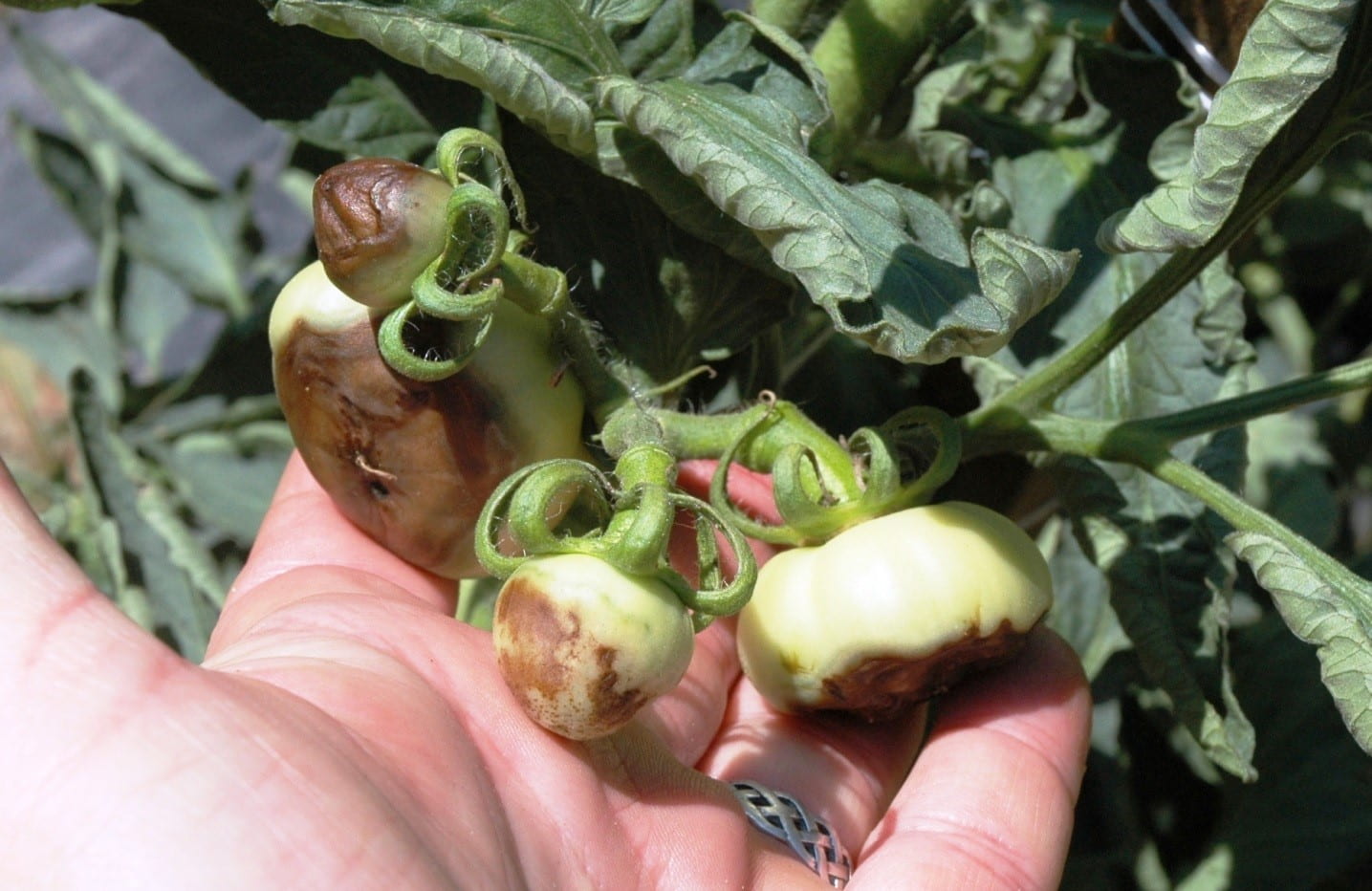By Jerry Brust, IPM Vegetable Specialist, University of Maryland
This is just a reminder with the usual summer weather we have had lately with stretches of very high temperatures and the occasional very heavy down pour we have had over the last few weeks blossom end rot can become a real problem in tomatoes. Sunny days will suck water through a plant quickly and the downpours will disrupt calcium movement through the plant. The key is to try and maintain consistent soil moisture while the fruit is developing. Easier said than done I know, but soil moisture levels need to be monitored as best as they can. When you see something like figure 1, with all the tomatoes on a cluster with blossom end rot you know the soil moisture fluctuated greatly over a fairly long period of time. Applying some foliar calcium sprays may help, but the applications can’t overcome poor soil moisture management.
